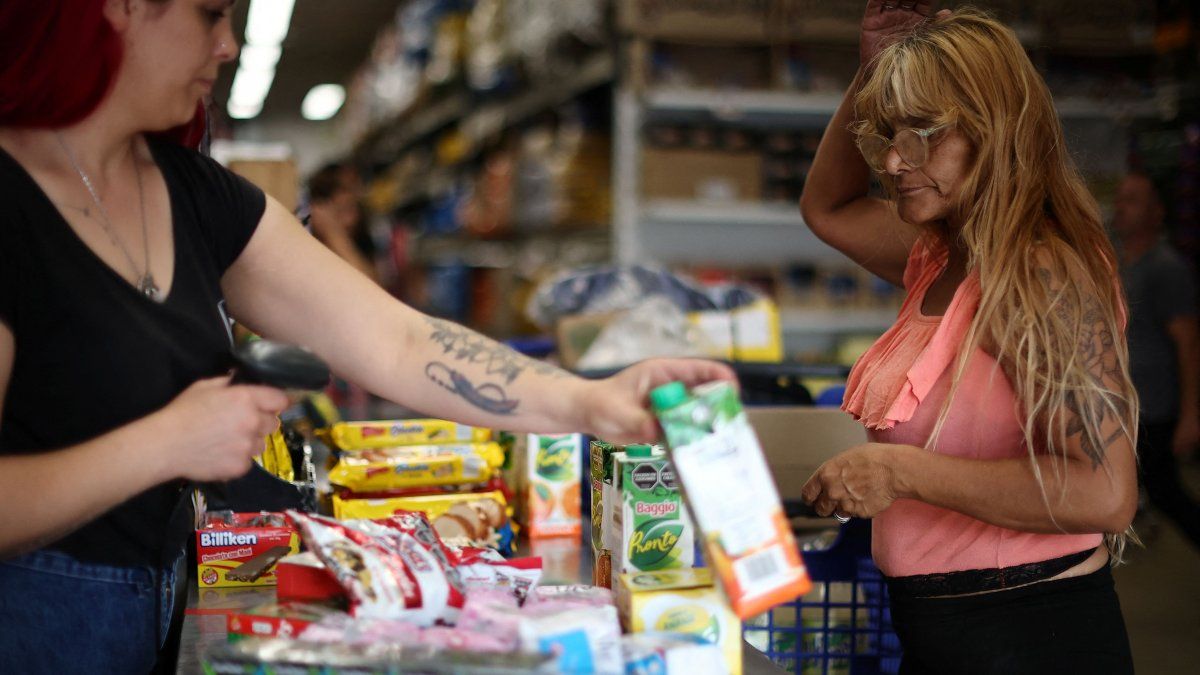The government is trying to establish that inflation -which INDEC will release this Tuesday- continues to decelerate, but although the data is true, The prices of key items such as food and beverages would not be softening as much as expected.
They continue to be a challenge for pockets that cannot cope with the rise in expenses across the board that households must face.
According to a report from the consulting firm LCG, the first week of March closed with an inflation of 3.6% in food and beverages.
This represents an acceleration of 2.3 percentage points compared to the previous week. Thus, the increase averages 11.9% in the last 4 weeks and 12% end to end in the same period.
Among the food goods with the highest weekly increases were dairy products and eggs (9.4%), fruits (8.82%), ready-to-go meals (6.52%) and vegetables (3.83%).
Last Wednesday, the minister Luis Caputo summoned representatives of the main food companies. He told them that he considered that There were prices that were rising too much depending on how the dollar was moving.
After the meeting, Caputo said that there was “coincidence that prices are going to continue falling and that it is important to make the real price per unit of the products transparent so that they can be appropriately captured by Indec.”
Caputo believes that many companies increased their prices anticipating that the inflationary jump would be greater than it was.
“Today they have very high list prices that people mostly do not validate, and that they have already begun to lower them, but through promotions, such as 60% discount on the second unit or even 2 for 1,” said Caputo.
President Javier Milei believes something similar, who said that these discounts are not captured by Indec due to its unit measurement method.
Economist Martín Kalos, from the consulting firm EPyCA, explained that “for several months, food has been showing a dynamic where in the first week of each month they accelerate. This has to do with the behavior of companies that wait until the 1st of every month to send price lists”.
“In a high inflation regime like the one that has existed for a year and a half or two, prices react to different variables, not just one,” such as the dollar.
Thus, “in December food prices rose hand in hand with the devaluation of the official dollar, but in these months we are seeing companies anticipate planned increases in energy, for example. In addition, inflation remains high, although it slows down a few points in February,” Kalos said.
To this we must add that “there is still no competition from imported products to offset these increases.”
“Food inflation cannot be dissociated from inflation in general. You cannot put a cap on certain prices while others accelerate,” adds the economist.
Kalos explained that with the devaluation of the official exchange rate at the start of Milei’s administration “there were precautionary increases on the part of many companies that exceeded December inflation. But with the data for January and February it is difficult to think that they were not adjusting prices. Today the problem is that they do not sell because the market is depressed and they resort to offers such as 2 for 1 to have income that allows them to cover fixed costs or in some cases increase sales volume.
However, he highlighted that companies have been using this marketing resource that Caputo referred to for years. “There is no evidence that there are now more levels of discounting or that the index is not reflecting real inflation.”
And he highlighted that questioning INDEC when inflation escalates is common practice. “Other governments also complained that INDEC measured poorly, and this was never true, except in the Guillermo Moreno period. Even Cavallo and Lavagna published parallel indices with their own inflation measurements.”
According to the consulting firm Equilibra, there are specific and seasonal factors that push inflation in March.
One is the impact of Easter on the consumption of certain foods such as fish and chocolate. In the coming weeks we will know what happened to prices in March. For now, there is encouraging data for the government: Buenos Aires inflation was 14.1% in February, and it gives Milei one more argument to maintain that the cost of living rose 15% nationwide.
Source: Ambito




